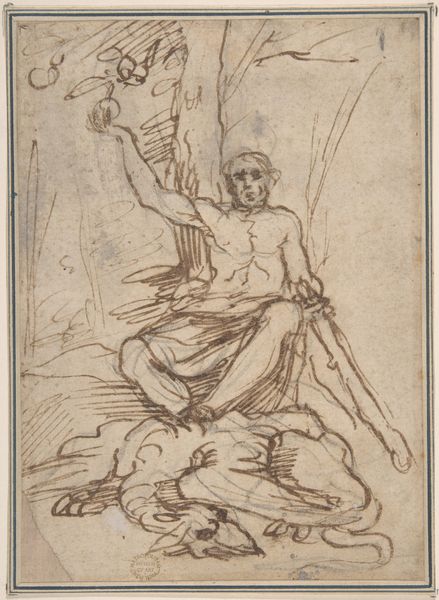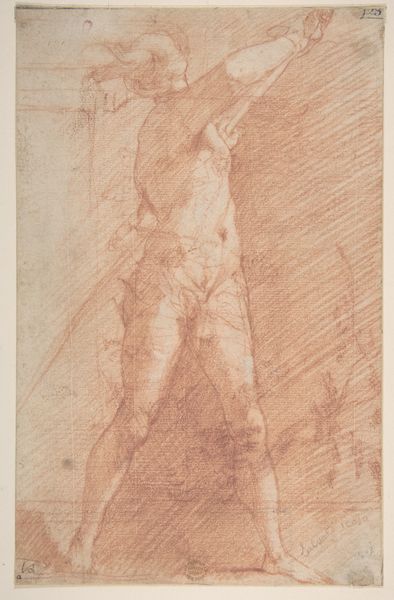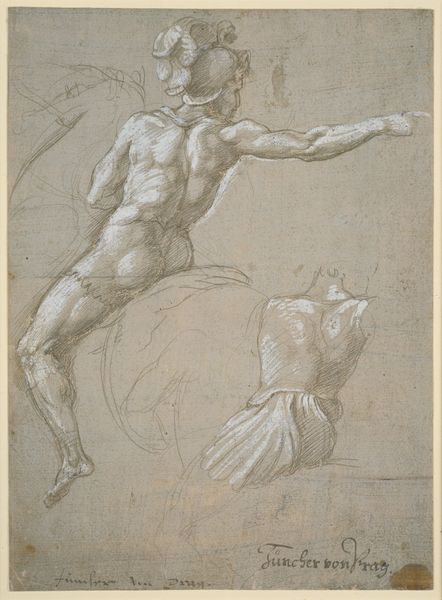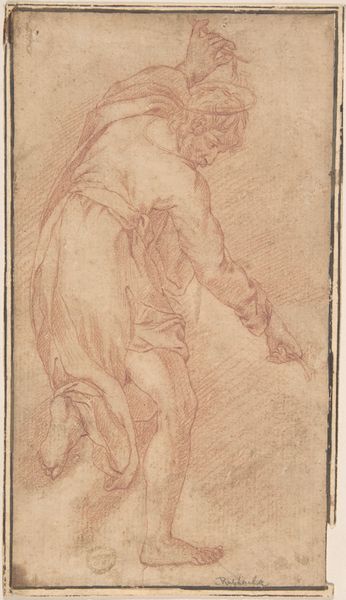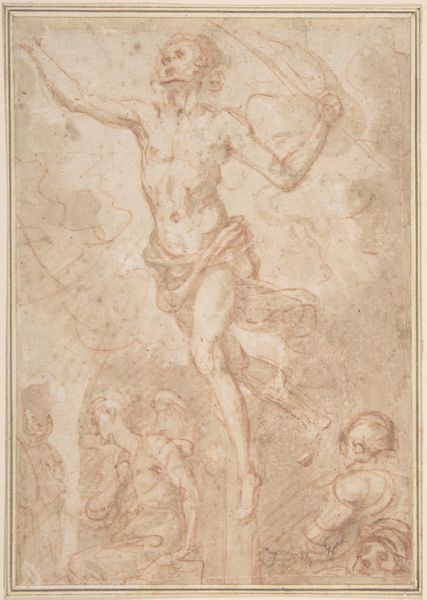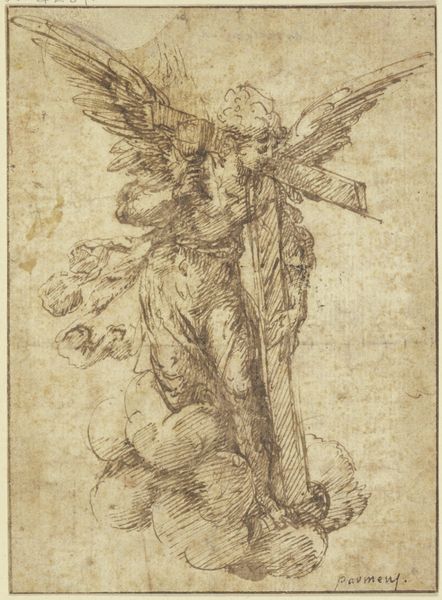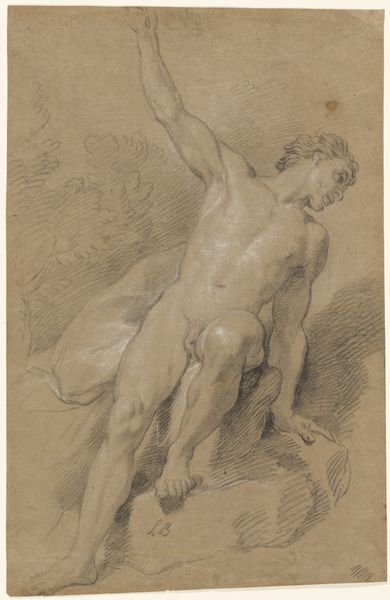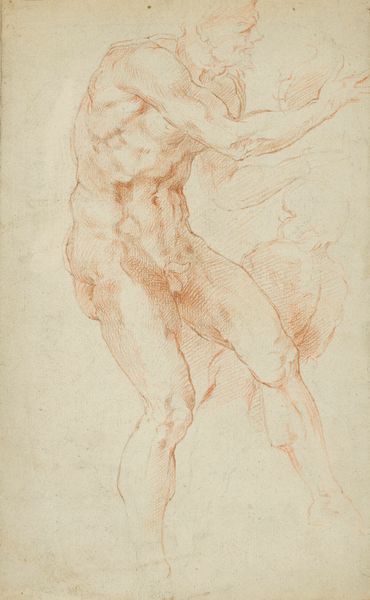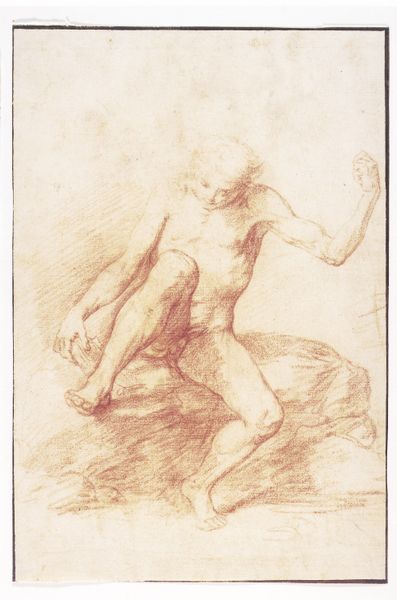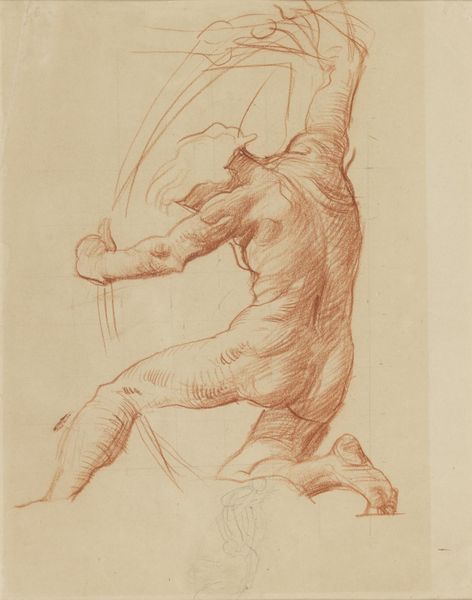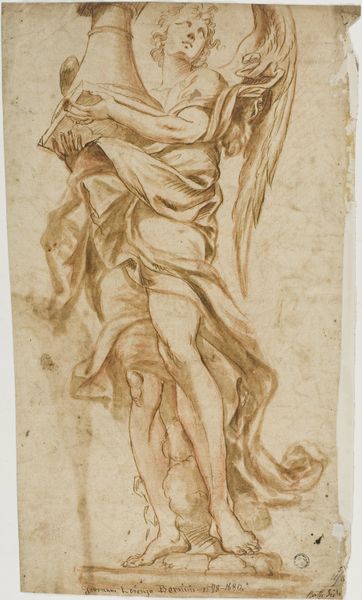
drawing, ink
#
drawing
#
charcoal drawing
#
figuration
#
11_renaissance
#
ink
#
pencil drawing
#
history-painting
#
italian-renaissance
#
nude
Dimensions: overall (approximate): 27.4 x 17.4 cm (10 13/16 x 6 7/8 in.)
Copyright: National Gallery of Art: CC0 1.0
Palma il Giovane sketched "A Flying Angel" around 1600 using pen and brown ink with brown wash on paper. The monochromatic drawing immediately gives us a sense of movement. The angel’s body, rendered in dynamic, swirling lines, fills most of the composition. Palma uses a semiotic system of signs to interpret the human form, focusing on musculature and implied motion, rather than detailed facial features. Note how the wings, sketched with rapid strokes, create a sense of lightness and ethereal presence. The overall asymmetry destabilizes the traditional representation of divine figures, infusing a raw, almost urgent energy. The artist’s formalist approach suggests a deeper engagement with the very act of creation. The angel is forever caught in a state of becoming, a visual metaphor for the ever-changing and reinterpretable nature of art itself.
Comments
No comments
Be the first to comment and join the conversation on the ultimate creative platform.
